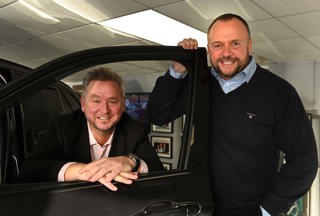Ensuring sales executives can successfully offer a wide array of add-on products alongside the car sale takes skill and judgement. The used car customer may be on a constrained budget and will most likely have done lots of online research before coming to view the car, yet with careful qualification and observation the sales executive may spot opportunities for extra profit.
An immediate concern is the impact that the Financial Conduct Authority (FCA) may have on the way used car dealers select and prioritise the add-on products being offered. The FCA’s pursuit of “better customer outcomes” is already being made evident in its market study of general insurance add-ons, such as GAP, and how they are sold. The FCA is yet to finalise how it plans to redress the “ineffective competition” it has identified.
Meanwhile, dealers are considering their options. As one supplier of a non-regulated add-on product told AM: “Depending on the outcome of the regulation, the emphasis for dealers on what add-ons they offer at point of sale will be strongly considered, purely because it will be a huge revenue loss they will want to make up.”
Another added: “We expect dealers will move on to non-regulated products where they can optimise the profit opportunities of those products.”
There are plenty of those opportunities, albeit with lower profit per unit than some dealers would desire. Alongside the staples of service plans and paint protection, focus could shift to lifestyle accessories, vehicle tracking devices and digital radio conversion kits on used cars. The Sewells’ Best Practice Guide to Selling Skills for Car Sales Professionals recommends compiling a list of 20 to 50 accessories for customers. It should be in price order with a brief description of each and a monthly payment equivalent.
Adrian Foster, managing director of consultancy Adroit Automotive, believes there is still a future for regulated insurance add-ons, but profits will be on a different scale to those previously enjoyed: “It is inevitable that GAP will become much cheaper to consumers than it is currently. That means dealers will have to find products that balance that, maybe that pay out smaller claims but more often, such as cosmetic warranty or tyre and alloy wheel cover. Dealers will have to go down the road of offering four or five lower-cost products and getting the customer to buy two or three, rather than their current strategy of offering three and the customer might buy one.”
John Wright, national sales manager at World of Warranty, agreed, and cautioned that dealers must not put the customer off with unacceptable costs.
“Make sure the product is competitively priced. It is easy for a dealer to take the opportunity to attempt to make a large profit compared to the wholesale price.
“The problem is that it more than often results in no sale. It is better to make a smaller margin and more sales as an increase in sales of extended warranties has the added benefit of protecting both customer and dealer in the event of a claim.”
Opportunities to sell MoT cover or mechanical breakdown insurance can be identified by finding out how long the customer typically keeps their car, or by the length of their finance term.
One possibility is to provide six months’ warranty cover as standard on cars, but offering customers the choice to upgrade to a dealer-branded warranty for an extended period, say 12, 24 or 36 months.
In one example explained to AM, the sales executive is responsible for building the relationship with the customer, including qualification and test drive, and the sales controller will put together the deal on an offer sheet. It will include GAP, paint protection and a warranty if it’s appropriate and becomes a point for negotiation.
Following a rigorous process, with careful attention given to the qualification, the sales person establishes how long the customer plans on keeping the car. Say it is three years and there are two years’ of manufacturer cover remaining – then the dealer would sell a 12-month package to ‘fill the gap’.
Staff don’t substantially discount the warranty because without a reasonable level of profit they don’t get commission.
Dealers say culture, training, regular reviews, measurement of performance and relevance of the product are important to push penetration to potentially 50%.
Another favoured source of additional profit to the used car sale is paint and fabric protection. Asking every customer at the part-exchange appraisal stage if they know their car has had paint protection applied has led some dealers to a 40% success rate in sales of protection product since it prompts customers to ask about the benefits themselves.
Qualifying the customer can, of course, identify other opportunities. For example, tailor your offering to your customer base and the vehicles you sell – are towbars, truck canopies, cycle racks and dog cages an appropriate sell? If so, be ready to demonstrate them.


















Login to comment
Comments
No comments have been made yet.